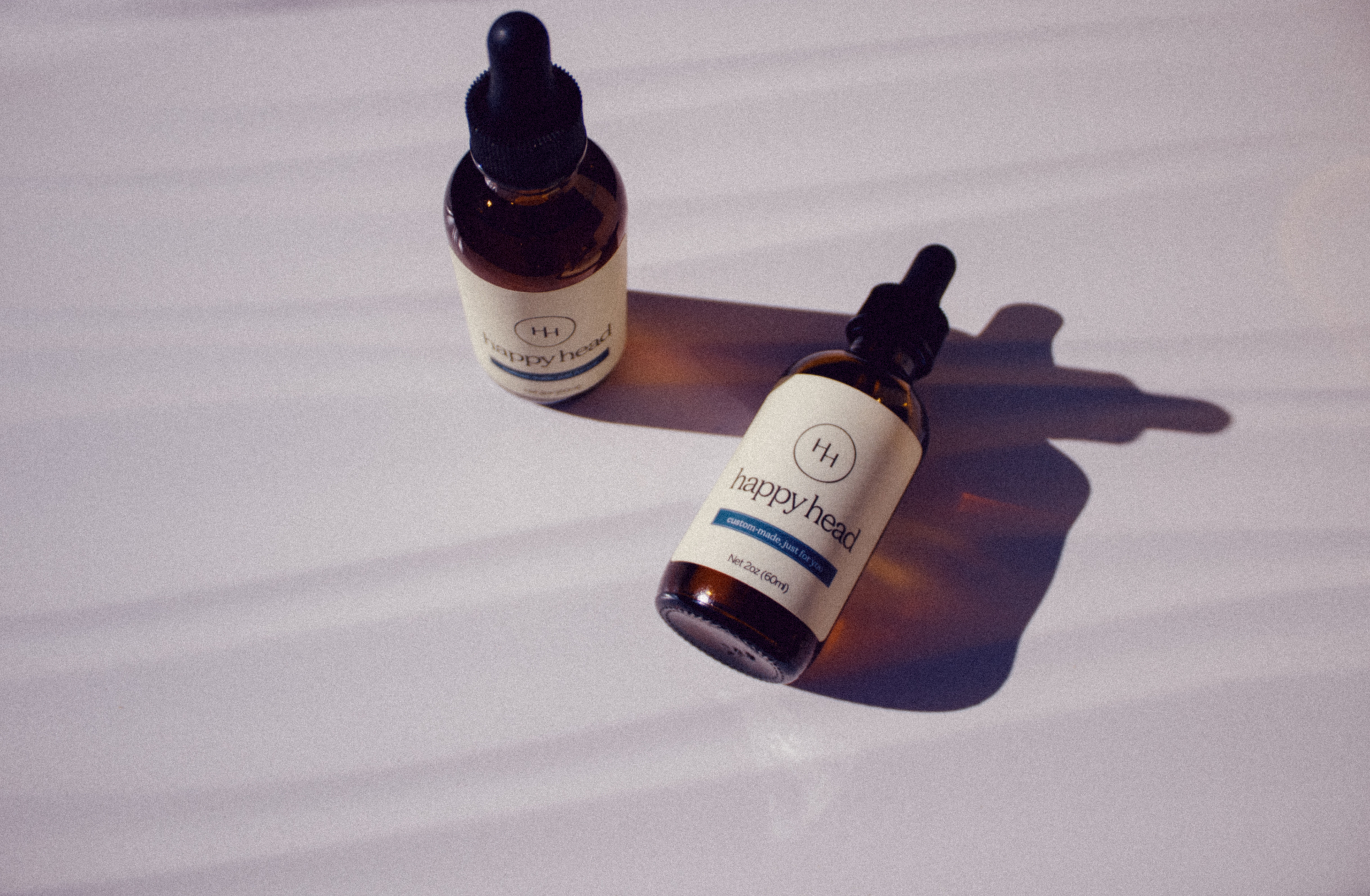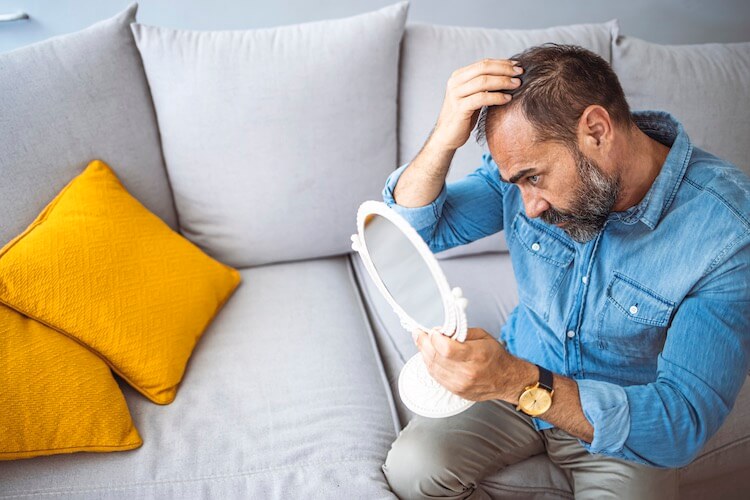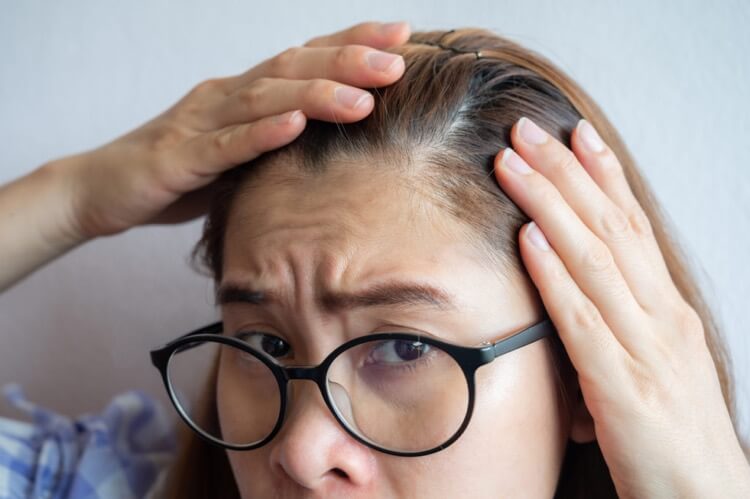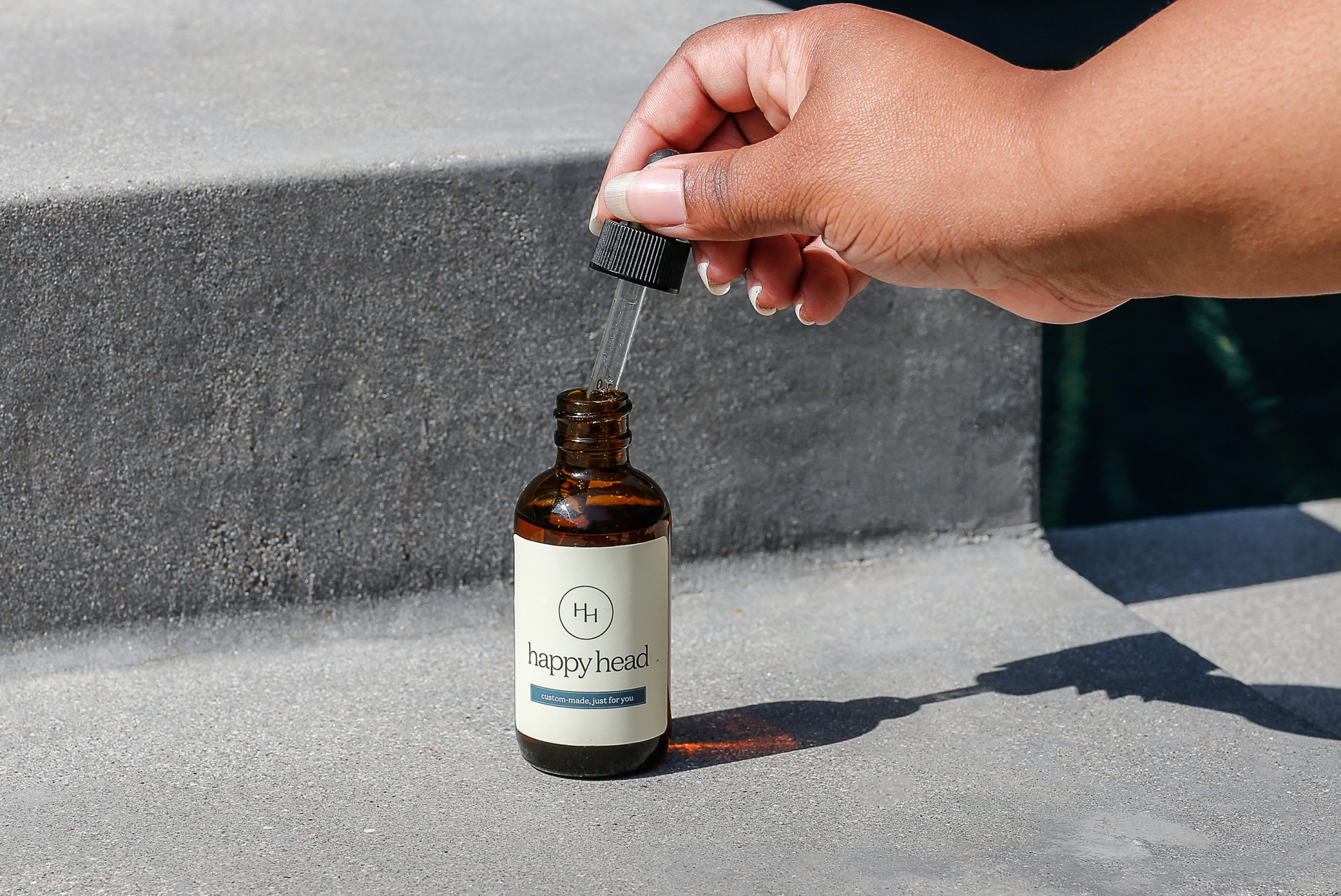Tips for Battling Female Pattern Hair Loss

Ladies, raise your hand if you’ve ever expected your hair to start thinning. Or even worse, fall out altogether. Nope, it probably wasn’t in your master plan. It certainly wasn’t in mine. So when I started seeing more and more of my ghostly white scalp shining through my rapidly widening part line, I did what any normal, rational woman would do. I started obsessing over my hair. To avoid what I went through, I put together my top tips for battling female pattern hair loss.
Obsessing Over Your Hair is Stressful
I’m sure friends and family started to notice it, but I was so focused on it that it stressed me out. There had to be something I could do. So, I went down a rabbit hole searching for answers. I wish I had a quarter for every hour I spent Googling “female pattern hair loss” and shopping for products to help me grow my hair back. I even started searching for photos of women who shaved their heads to get an idea of what I might look like in the future. And of course all of the stress had an affect on my hair loss and thinning.
You Will Learn to Live With a New Normal
I started treatment recommended by my dermatologist, and I let my hairdresser experiment with a new style he had been trying to convince me to try. Life slowly returned to my new normal, and I stopped dwelling on my hair. Yes, Finasteride and Minoxidil will be a permanent part of my daily routine, but my hair no longer rules my thoughts. Now that I know what I know, I would do things much differently. Here’s what I learned about coping with female pattern hair loss.
1. Get Diagnosed Early
If you think you’re losing more hair than you used to, you probably are. Don’t second guess yourself, and don’t worry about whether your dermatologist will think you’re crazy. Get an appointment ASAP.
If you have female pattern hair loss, you need to start treatment while the hair follicles are still viable. If you’re new to this hair loss rollercoaster, here’s what that means. Even though you’re a woman, your body produces a small amount of testosterone. In genetically predisposed women, some of that testosterone converts to a hormone called Dihydrotestosterone (DHT). DHT invades your hair follicles and shrinks them. Over time, the hair follicles can completely close up. So, you want to begin treatment while there’s still an opportunity to keep the hair follicles open and capable of producing new hair.
2. Don’t Overthink Your Treatment Plan
After confirming that you do indeed have female pattern hair loss, your dermatologist recommended using Minoxidil to enlarge your hair follicles and Spironolactone to block DHT from adhering to your follicles. She also told you that Retinol would help with absorption, and cortisone is available to treat any irritation you might get. What do you do? Run to the nearest compounding pharmacy to pick up your prescriptions?
Probably not. If you’re like many women, you start researching and reading. And, the more you read, the more apprehensive you get. Dread shed, dizziness, a lifelong commitment… before you know it, the list of cons piles up. Voice of reason here. Don’t go down that path. Take a deep breath and listen to the trained medical professional who has treated countless patients before you.
There are pros and cons to every medication. The truth is that every person responds differently to each treatment. You won’t know what treatments will work best to regrow your hair until you take the plunge and try them. Just because someone on social media didn’t respond to Minoxidil doesn’t mean you won’t. Just because Spironolactone made your best friend’s cousin feel nauseous doesn’t mean that it will happen to you. Dive in and hope for the best. Who knows, you may be the one on Facebook sharing your success story.
3. Be Patient
Waiting for your hair to grow back is really hard. You desperately want to look like you used to, and you have zero control over your hair’s growth. So, you wait. And wait. For sure, you’ll have a full head of hair again soon, right? Doesn’t it just take a few weeks? Not exactly. It takes about six months to a year to see results.
Even then, you may not realize how much progress you’ve made. It’s difficult to notice the changes when you see yourself in the mirror every day. The only way I knew that my hair was growing was because my dermatologist took photos every time I had an appointment. If your dermatologist doesn’t take photos, consider taking your own each month. Make sure you take pictures from the exact same spot and angle each time. That way, you have a solid comparison over time.
4. Be Open to Change
It’s been six months, and you aren’t getting the results you wanted. Your dermatologist isn’t ready to give up yet, though. Neither should you. As mentioned earlier, female pattern hair loss treatment can look different for every woman. You won’t know ahead of time what mix of medications will do the trick, and it may take some trials to figure it out.
There are a few different DHT blockers available. Switching from one to another isn’t a big deal. The formulas are different, and one may work better with your body’s chemistry. Here’s an example. If Finasteride isn’t strong enough, there’s always Dutasteride. Finasteride, which inhibits one type of enzyme responsible for converting testosterone to DHT, is usually the first-line medication because it’s pretty effective. If that doesn’t work, your dermatologist can prescribe Dutasteride which inhibits two enzymes. The moral of the story is to keep an open mind and be willing to experiment.
5. Have Realistic Expectations
Remember that treating female pattern hair loss means helping your hair follicles function as well as they possibly can, given the circumstances. Your hair may or may not look like it did five years ago. I was fortunate that my hair responded well to treatment. People who meet me can’t tell that I’ve experienced hair loss. However, since I didn’t get treatment immediately, the follicles closed off in a small spot on my scalp. Over the years, I’ve had to accept that it won’t come back. So, I cut a few layers to camouflage it.

Other people I know who were able to get enough growth to make their hair look fuller still use a little root cover-up on their part lines. It’s easy to apply and looks natural. You can’t tell it’s make-up. If you’re realistic about what medications can do for you, you’ll be more satisfied with the results. You may not end up with a supermodel’s hair, but you can still look and feel like one.
Staying calm when you’re losing your hair is not an easy feat. Hopefully, these tips will help you cope and feel confident about your decisions. If you need another opinion, Happy Head is here to help.
We have board-certified dermatologists licensed in every state to help women like you get the right treatment for your female pattern hair loss. Fill out our online questionnaire and schedule a FREE phone consultation to get started and regrow your hair today.







